When Overcrowding Sparks a Miracle
Reading Time: 12 min
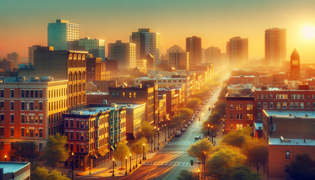
About Story: When Overcrowding Sparks a Miracle is a Realistic Fiction from united-states set in the Contemporary. This Descriptive tale explores themes of Redemption and is suitable for Adults. It offers Inspirational insights. A peculiar solution to a looming crisis reminds us that adversity can spark unexpected hope.
Introduction
Deep in the heart of a thriving American metropolis, summer sunlight cascaded over concrete rooftops and lush, hidden gardens. In the midst of this urban sprawl, where families and dreamers struggled beneath the looming pressure of overcrowding, a subtle revolution was stirring. The narrative begins in a neighborhood that mirrored the spirit of America itself—resilient, vibrant, and always hopeful despite its challenges. Gentle breezes carried the smell of freshly brewed coffee and city florals along crowded sidewalks as people squeezed their way past old brick facades and modern glass towers.
In this tight-knit community, every passerby bore stories of triumph and pain alike, and each face was a tapestry woven with memories of better days and dreams of a brighter tomorrow. Amid the cacophony of honking cars and animated chatter, a quiet voice emerged amongst local leaders: the idea that if things were going to be tough, maybe it was time to rethink what constituted a problem. It was in this unlikely moment that a striking realization came to light—when the pressure of endless growth and overcrowding reached its peak, there thrived a possibility to reshape boundaries, both physical and metaphorical.
As the city grappled with the strain of too many souls in too little space, a uniquely elegant solution began to reveal itself, promising that no matter how dire circumstances appeared, a richer, more supportive human connection awaited. With every sunlit morning, the idea spread like the rays of dawn; it whispered a reminder that even the worst scenarios could be eclipsed by gratitude for what already existed. The stage was set for an unexpected transformation where community, kindness, and innovation would merge in a daring plan aimed at rebalancing life in the urban jungle.
Crowded Beginnings
In the concrete maze of the city, where every inch of land wrestled for the presence of life and living, the intensity of overcrowding was both obvious and yet quietly accepted as destiny. Evelyn Jacobs, a community organizer with tireless passion and a spark of rebellious insight, became a symbol of resilience in a neighborhood teeming with dreams and discontent. Every day, Evelyn navigated bustling streets packed with families, street vendors, and workers hustling between jobs in a labyrinth of high rises and rundown apartments. The city’s architecture spoke of its layered history—from Victorian row houses now repurposed as multi-family dwellings to gaudy modern towers that housed both the wealthy and those constantly scraping by.
Evelyn, with her chestnut hair tossed in a casual bun and an ever-present look of determined kindness, had seen the myriad consequences of what America’s boundless expansion could incur. The narrow sidewalks, overfilled buses, and boarded-up parks were more than mere inconveniences; they were painful reminders of the scarcity that came with relentless progress. Yet, amid the discontent, Evelyn’s empathetic heart harbored a belief that the crisis of cramped spaces could be a catalyst for something wondrous.
During community meetings held in a repurposed hall bathed in natural light that streamed through large arched windows, residents argued about solutions ranging from high-tech urban planning to nostalgic calls for simpler times. The idea of adopting the mantra ‘it could always be worse’ slowly united these disparate voices. Evelyn suggested that if individuals could shift focus from the chasm of what was missing, perhaps they could see that the current challenges, though daunting, were nothing compared to potential disasters. The notion was provocative: even in overwhelming conditions, a perspective of gratitude and creative resilience might forge paths to reform.
The local news began to pick up whispered conversations about unconventional methods to alleviate the pressure. In the midst of chaos, unconventional parks arose from abandoned lots, and temporary art installations decorated vacant walls. The streets, once intimidating in their rush-hour frenzy, morphed subtly into communal spaces for impromptu festivals and lively markets. It was as if the city, too, had decided to take a deep breath and say, ‘Yes, we are overcrowded, but look how much love and ingenuity you have among you.’
Day by day, as the urban crowd surged and ebbed like a living tide, Evelyn’s vision began to shape a counter-narrative: that a bad situation might often be the precursor to something spectacular. Here, in the densest parts of the city, the human spirit was learning to transform adversity into opportunity, and individual stories began to merge into a collective tale of perseverance and hope.
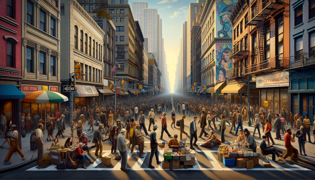
A Glimpse of the Unconventional
When the notion of simply accepting the status quo began to lose its appeal, local leaders convened to brainstorm solutions that transcended traditional urban planning. Evelyn spearheaded a town hall meeting at the local community center—a repurposed warehouse that radiated both history and possibility. As skylights spilled natural, warm light onto round tables and scattered blueprints, a diverse group of citizens came together to discuss a radical approach: re-engineering existing spaces into shared living zones that promoted collaboration rather than isolation.
This unconventional plan proposed the transformation of vacant lots, abandoned buildings, and even portions of overused parklands into multi-purpose hubs. These hubs would serve as community centers, urban farms, and co-working spaces. The vision was intricate yet beautifully simple—a network of green corridors and shared spaces that would not only relieve congestion but foster a sense of unity. The idea was declared with a touch of humor and realism: "Our city may feel like a sardine can right now, but at least sardines stick together," quipping a local artist whose work had imbued the community center with splashes of color and whimsy.
The creative energy was palpable. Seeds of art installations, impromptu music nights, and even community freestyles took root. The plan was not without its skeptics; many burdened by years of urban challenges doubted that mere rearrangements of space and mindset could produce lasting change. Yet, even in the midst of doubt, engineers, architects, and passionate amateurs rallied, driven by the unyielding spirit of those who refused to let overcrowding define their lives.
The morning after the meeting, as the sun broke through an unusually clear sky, Evelyn walked through the neighborhood and witnessed subtle transformations: a derelict lot sprouted a community garden where children laughed and elderly residents shared stories, while a row of abandoned shopfronts was turned into an open-air gallery. These sparks of change were not solutions in themselves but signs of hope—an acknowledgement that even in the crowded confines of a big city, creativity could sow the seeds of renewal.
As whispers of change fluttered through quiet, tree-lined streets and open parks, it became evident that this odd solution was inspiring a grassroots movement. People ceased to view overcrowding as a curse and began to see it as a conundrum ripe with potential for reinvention. The city was on the brink of a metamorphosis, one that illuminated the paradox: when faced with relentless pressure, humanity’s capacity for adaptation might just be its greatest strength.
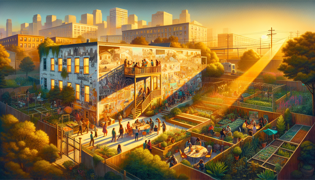
Expansion and Realizations
As the plan took practical shape, unrealized spaces across the city began to emerge as beacons of innovation. Evelyn and her band of collaborators began piloting projects in different boroughs, each one reflecting the city’s diverse cultural tapestry. An old textile factory became a vibrant makers' space where technology met craft; an unused subway station transformed into a subterranean art and performance venue reconnected neighbors in an underground celebration of heritage and vision.
Each project was marked by days of exhaustive work under brilliant blue skies and fresh morning light. Volunteers painted murals, built community gardens amid dilapidated lots, and repurposed old structures into communal kitchens, libraries, and performance spaces. The journey was not easy—bureaucratic obstacles and skeptical neighbors often threatened to stall the momentum. Yet, the phrase ‘it could always be worse’ became a mantra in these transforming neighborhoods. It was a reminder that though challenges could overwhelm, the act of reimagining one’s surroundings held immense power.
In a particularly striking project, a derelict industrial estate was converted into an urban oasis, dubbed The Haven. Here, glass domes and reclaimed steel structures were interwoven with wildflower meadows and reflective water features. The Haven came alive with community-run workshops on sustainability, storytelling sessions under trellises of flowering vines, and even impromptu music festivals that resonated with laughter and song. Every brick and beam in this transformed space echoed the possibility of redemption—of turning adversity into a mosaic of light and possibility.
With each unfolding chapter, long-held grudges softened and the collective wisdom began to shine. What started as a reactive, almost resigned expression of, ‘things could be worse,’ slowly blossomed into an anthem of self-expression and dynamism. People learned to appreciate the beauty hidden beneath chaos, fostering a collective resilience that embraced both the struggle and the optimism for a better tomorrow. Amid the flurry of construction, art, and community dialogue, subtle yet profound realizations emerged: even amid the clamor of the crowded city, every human effort had the power to reshape destinies, reframe perspectives, and imbue everyday moments with the light of opportunity.
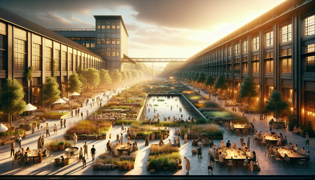
Reclaiming Space and Hope
Emboldened by the early successes and the tangible change taking root throughout the community, the movement entered a new phase: the official launch of the Urban Renewal Initiative. This ambitious project aimed at rethinking not just physical structures, but societal constructs that had kept individuals isolated even within crowded spaces. Town hall meetings were now held outdoors in newly formed plazas, where art installations and interactive exhibits bridged conversations between residents from different walks of life.
Evelyn, now a seasoned advocate and a well-respected figure, took center stage during one such gathering. Dressed in a smart, tailored outfit that balanced both practicality and artistic flair, she shared her personal journey—her struggles, triumphs, and the moments when the overwhelming pressure of the city made her wish for an escape. Yet, through those very hardships, she realized that the beauty of life often resides in overcoming challenges. "We are the proof," she declared, "that even in congestion, creativity and community lights the darkest corridors of despair." Her speech was met with resonant applause, laughter, and tearful nods of recognition.
The initiative became a living example of urban resilience. Volunteers and professionals alike collaborated to ensure that every transformation project was not only aesthetically pleasing but also functionally uplifting. Local businesses joined the cause, reinventing their storefronts as interactive community walls and peaceful lounging zones. Stories of personal sacrifice and bold innovations interwove to overcome the city’s overwhelming pace, proving that the willingness to adapt could turn the tide.
In quiet moments, as warm afternoon light filtered through sprawling city parks, these newly reclaimed spaces served as informal classrooms for life itself. Parents taught children the magic of planting seeds—anchoring both soil and hope—while elderly residents recounted tales of bygone eras, inspiring generations to value every new beginning. The entire city began to reflect a nuanced beauty: an urban mosaic crafted by people who dared to look beyond the chaos and see that even the worst scenarios were laden with potential waiting to be unlocked.
As the initiative grew and touched more lives, the once-overwhelming notion of overcrowding shifted to one of abundance. Abundance in creativity, in heart, and in the unyielding will to rise above daily struggles. Here, the paradox crystallized: the very condition that had once seemed unbearable was, in its own strange way, the fertile soil upon which new dreams blossomed.
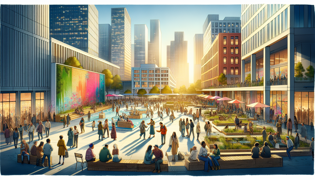
Conclusion
In the soft glow of a setting sun, the city that had once been defined solely by its struggles now stood as a testament to what could be achieved when adversity was met with courage and collaboration. Evelyn, gazing over a transformed urban skyline, felt a quiet peace settle within her as she recognized that the journey toward renewal was never about erasing hardship—it was about transforming it into a canvas for hope. With each community meeting and every newly activated space, the citizens had rewritten the narrative of overcrowding into one of abundance: abundant passion, creativity, and human resilience intertwined to redefine what it meant to belong.
In hushed conversations along rejuvenated sidewalks, community elders would recount the turning points, where the simple wisdom of ‘it could always be worse’ sparked the kind of bold innovation that only desperation can kindle. Families gathered beneath reclaimed urban oaks, sharing meals and stories that bridged generations. The arts flourished in public spaces once condemned to decay, and every corner of the city was suffused with the tangible presence of a people who refused to surrender to fate.
The long and arduous process of urban transformation was not without its scars, each one a lesson etched in the collective memory. Yet, in those scars lay a beautiful truth: the perseverance of a community could indeed illuminate even the darkest challenges. In this reimagined cityscape, the people had discovered that the spirit of redemption was not a fleeting moment but a testament to everyday bravery. And as the night descended with a gentle warmth, the city hummed with the silent acknowledgment that, regardless of the trials yet to come, they had found a way to create home in the heart of chaos—a reminder that no matter how overcrowded life became, it could always be worse, and that hope would always prevail.

















